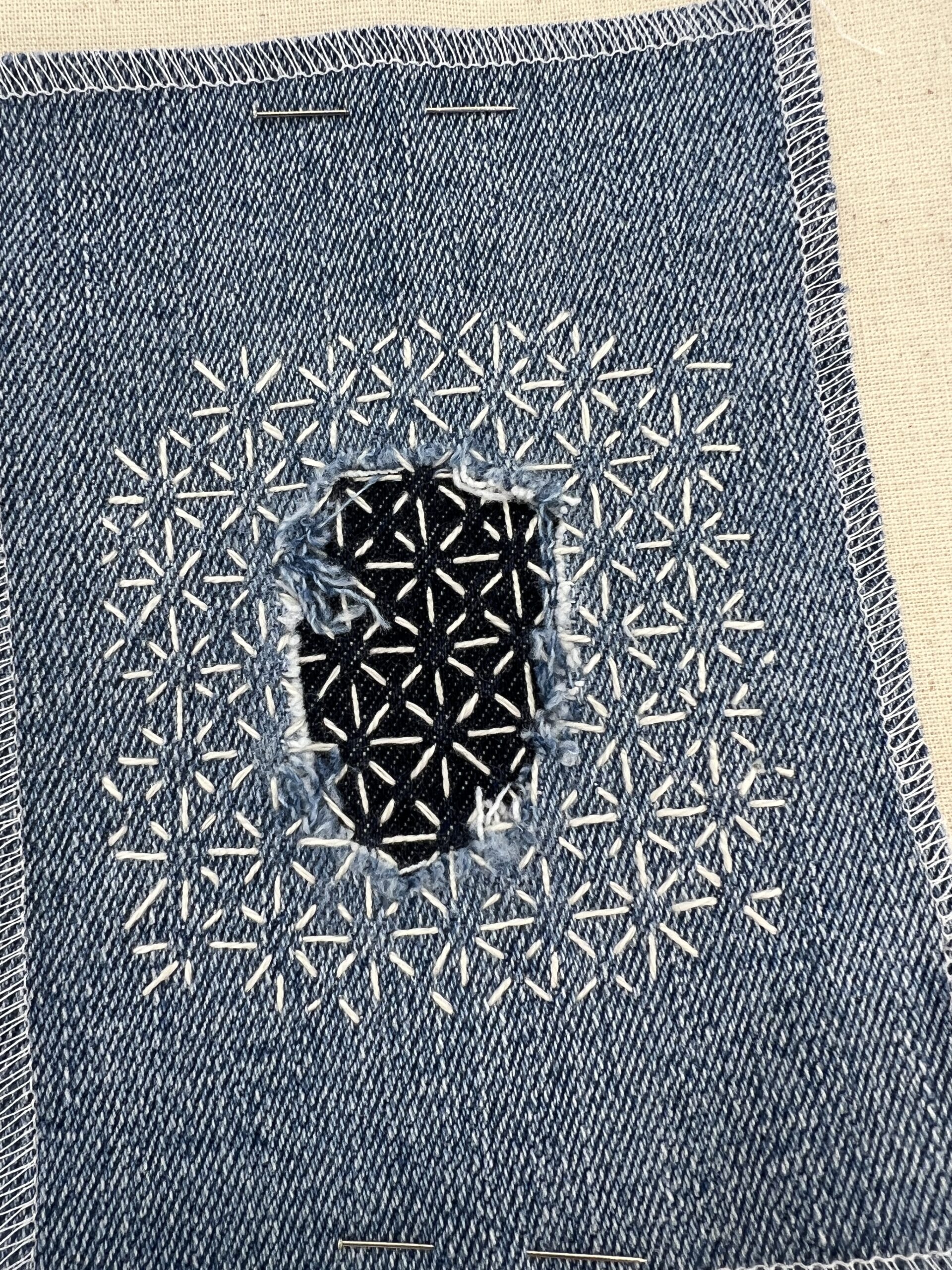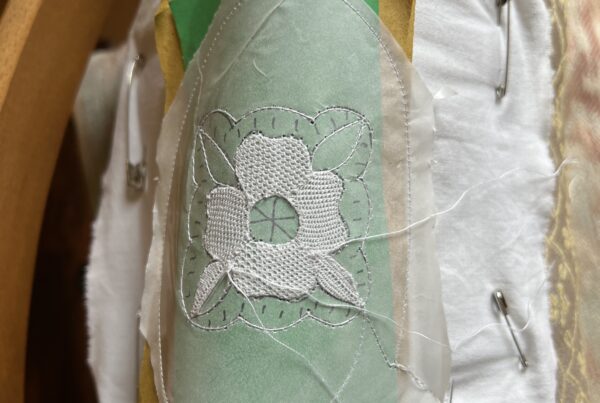We all know how the fashion industry is one of the most damaging industries for the planet and we also know that it’s a continuous cycle of consumerism and wasting of resources.
According to the World Economic Forum, fashion production makes up 10% of humanity’s carbon emissions, dries up water sources, and pollutes rivers and streams.
So, how can we make a small step towards a more circular way of producing garments?
In my opinion, mending is one of, if not the best option to reach this goal. Not only it can be adapted to each individual’s needs, but it also increases creativity and can save a lot of money in the process. Mending is also an ancient and precious tradition, used by every population to increase the life of a garment and shape it when passed to a new owner.
Before the Industrial Revolution fabrics were incredibly expensive and for the majority of the population just buying new clothes was almost impossible. So humans, as we often do, adapted to the challenge and found creative ways to repair their garments. Let’s think about Sashiko embroidery, for example, used originally by farmers in Japan to mend work clothes, became one of the most famous mending techniques and it’s still used today.
Now, let’s explore some practical techniques for mending clothes, starting with visible mending options like patches and embroidery.
As for the patches, you can look for them in vintage stores or online, depending on the style you want for your garment or you could create one yourself. To do this, get a piece of fabric that you like and that you think could enhance the colors and the style of your broken garment and draw a shape or write something meaningful to you. Once you created your patch, finish the borders with the overlock or with a blanket stitch and apply it to the fabric.
Moving on from patches, let’s delve into another effective mending technique: patchwork. This method allows for creative expression and, personally, I find it particularly useful to save all the scraps of fabric I have lying around and repurpose them into something new.
Talking about patchwork, I feel the importance of quoting Clare Hunter, author of the book Threads of life: “In many cultures is believed that patchwork and pieced quilts made from peoples’ clothes transferred energy between generations, the dead and the living, mother and child, creating a collective human power, each salvaged piece transmitting its own force of identity”.
Here we come to my favorite way to mending clothes (even if I’m a little biased on the topic): embroidery. Exactly like sashiko, you can use an incredible amount of decorative stitches to embellish your garments and hide or enhance the defects on the fabric. Some of the most common stitches are backstitch, chain stitch, satin stitch and blanket stitch. Get really creative with colors and shapes, you can’t really go wrong adding as many embroidered details as you want!
If you want to mend your clothes in a way that’s invisible, you have to find a thread that is exactly the same color and thickness as the fabric and make very small stitches from one side to the other to try to blend them into the hole. It can be really difficult and time consuming, so I would suggest trying it first on a different piece of fabric to master the technique, before using it on the garment.
The other invisible mending technique I recommend is using the fusible interfacing, which is a thin, adhesive-backed fabric that can be used to reinforce and repair damaged areas of fabric such as small tears and frayed edges. To apply it, cut a piece slightly larger than the damaged area, place it on the backside of the fabric and iron it in place.
In conclusion, mending represents more than just a practical solution to extending the life of our clothes, it embodies a powerful shift towards sustainability and mindful consumption in the fashion industry.
By embracing mending techniques such as visible mending, patchwork, and embroidery, we not only breathe new life into our garments but also honor centuries-old traditions of resourcefulness and creativity. As we mend our clothes, we mend our relationship with the planet, reducing our carbon footprint and contributing to a more circular economy.
So, the next time you find a tear or a worn-out spot on your favorite garment, consider picking up a needle and thread instead of discarding it. With each stitch, we take a small yet significant step towards a more sustainable and stylish future.




